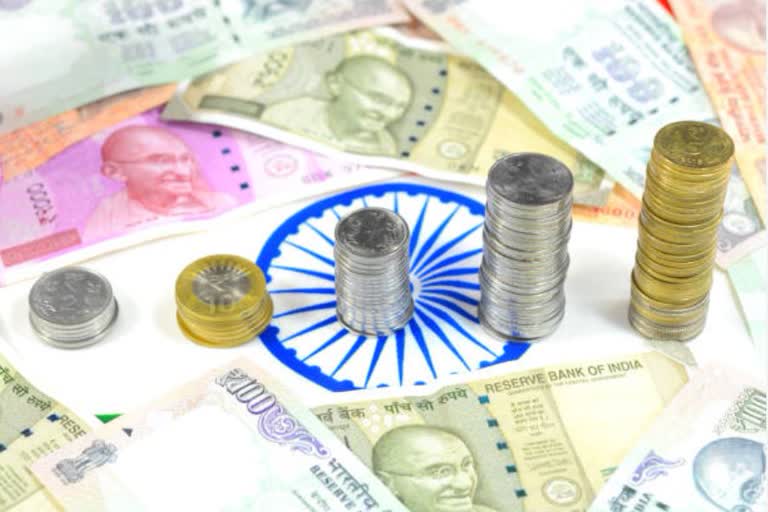Hyderabad: Consumption and investment, the two factors which influenced the economy are on a slowdown. Private equity which was at 66.2 per cent during 2012-14 fell to 57.5 during 2015-19. Investment rate fell to 32.3 per cent and growth rate fell to its lowest in 6 years. These numbers are a reflection of the upcoming crisis. Economic inequality, lack of basic infrastructure and a weak rural economy are the reasons.
The central government has introduced various schemes to strengthen the economy during such dire times. It announced incentives to encourage investments. Some of the incentives are the slashing of corporate tax to 22 per cent from the previous 30 per cent, increasing loans for constructions. The move to increase funds to housing finance companies to Rs 30,000 crore, is an important move.
In the budget session, it has been revealed that Rs. 100 lakh crore will be invested in basic infrastructure industry. The actual amount invested in each project will be decided by an expert committee appointed by the central finance ministry. There is no doubt that such huge investment will influence the infra industry. It will create returns on these investments and strengthen the economy. As a result, liquidity will increase. In order to achieve a laudable GDP and maintain it consistently, schemes must be implemented effectively instead of confining them to papers.
A nation’s human resource and economic development are interlinked with the progress it achieved in social and functional infrastructure creation. If the quality infrastructure is important for domestic product, societal infrastructure is important for human resource and economic development.
Quality education and healthy living conditions only can guarantee development in human resources. Though many organizations urged the governments to invest at least 6 per cent of the budget in education, the percentage is limited to 4.6. This is less than the international average. While India is spending only 1.5 per cent of the total GDP on healthcare, the US spends about 18 per cent.
As a result, Indians are forced to spend more on education and healthcare. After the 1991 economic reforms, financial inequalities have cropped up in the nation. In rural and urban areas, there was reported to be an uncommon rise in inequality index from 1993-94. In 2017, the richest 1 per cent owned 73 per cent of the wealth. There was only 1 per cent rise in the income of 67 per cent population.
Read more:Mutually advantageous if tread as one
According to the Global Competitiveness Index (2018), India stood 58th among the 140 surveyed countries. China, ranked at 28th is the best performer among the BRICS nations. India is spending less on basic infrastructure and amenities. By March 2019, India invested only 29.8 per cent of its GDP on infrastructure creation, which is less than the 15-year average.
Development of infrastructure directly boosts industries like iron, cement, steel, real estate and automobiles. There is a 4-5 per cent deficit in GDP in the field of infrastructure. If this deficit is overcome, economic growth can be accelerated. Then 1 per cent spend towards infrastructure can lead to a 2 per cent growth in GDP. When compared to global economies, India’s infrastructure is substandard.
The functioning of telecom, highways and railways has improved. India is lagging behind even in per capita income when compared to China. Electricity supply and its per capita consumption, internet connectivity, aviation and port quality in India are subpar when compared to other developing countries. After the IL&FS crisis, the manufacturing industry was badly hit. Non-Banking Financial Corporations (NBFC) have stopped giving loans to development projects.
To cater to the increasing population needs, new systems must be developed along with the development of existing infrastructure. A strong regulatory mechanism must be established in order to achieve this.
In order to uplift socially backward sections, spends must be directed towards the improvement of healthcare and education. The investments made towards basic facilities might take longer to yield returns. But the nation’s economy cannot be saved by growth in select few incomes.
To become a tough competitor to China, temporary relief packages must be avoided and the challenges must be immediately dealt with. Measures must be taken to improve the livelihoods of poor people. These measures must aim at developing their income and skill base.
Development banks which were established during the initial days of independence have now transformed into commercial banks. The loaning system of these banks is responsible for inequality in its capital and debts. That is why they are not so keen on giving loans to big development projects. Hence, governments must increase the number of development banks.
In the current economic scenario, the government’s expenditure plays a key factor. But the central government fiscal deficit has already crossed the limit FRBM has fixed. If the government can expend such high amounts is still doubtful. Limitless government expenditure can lead to inflation too. The answer to the current crisis lies in the government’s decisions to tackle the issue.
According to the famous economist Rathin Roy, Indian economy is already shadowed by a huge crisis. The purchasing needs of 10 crore people who are in the upper socioeconomic strata has influenced the national economy till now. They have already acquired the products and services they needed. Consequently, there came a slowdown in concerned sectors. This is harmful to developing economies like India. Inequality in property distribution is a major setback to economies.
If the inequalities expand further, there will be a lag in the duration of lower strata moving towards upper strata. In order to maintain the growth rate, the government must massively gather financial and human resources. If economic inequalities rise, there will be a fall in the availability of human resources.
Brazil and South Africa are examples of such a scenario. These two nations could race their growth rate for a long time but that could not bring about a change in the majority of the citizens’ lives. This is what has repeated in India too!



